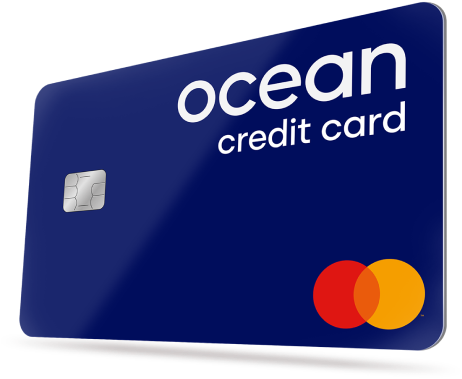What is credit card interest?
Credit card interest is the amount you pay for borrowing money on your credit card. When you carry a balance from month to month, the credit card company charges you interest on that amount. The interest rate is typically expressed as an Annual Percentage Rate (APR).
What is standard purchase interest?
Standard purchase interest is the rate applied to everyday transactions made with your credit card, such as retail purchases, online shopping, and bill payments. This is the most common type of interest, and is usually lower than rates for cash advances.
Your purchase APR is displayed as an annual percentage rate in your credit card agreement, though it's actually calculated daily based on your average daily balance.
How is my interest rate worked out?
Credit card interest is usually calculated daily using the Daily Periodic Rate (DPR), which is the APR divided by 365 days. It works by:
- Taking your balance at the end of each day.
- Multiplying your daily balance by the DPR to get your daily interest.
- Adding up the daily interest to get the total monthly interest charge.
Example:
Let’s say your credit card has an APR of 34.9%. To work out the Daily Periodic Rate (DPR), divide the APR by 365:
- 34.9 ÷ 365 = 0.0956% per day
If your daily balance is £100, your daily interest would be:
- £100 × 0.000956 = £0.10 per day
Over 30 days, this would add up to roughly £3.00 in interest if you didn’t make any payments during the month.
Your bank or lender will tell you your interest rate when you open your account. It’s displayed as an annual percentage rate (APR).
APR is the total cost of paying the money back, so it includes arrangement fees and not just interest. It’s calculated this way so you can see the exact cost of borrowing and paying that money back.
What am I charged interest on?
You will be charged interest on the following within your credit card balance:
-
Unpaid balances after the grace period (usually up to 56 days)
-
Cash withdrawals
-
Previous debt from expired introductory offers
-
Foreign currency transaction fees (from using your card abroad)
-
Previous unpaid interest
-
Late payment charges added to your balance
Most purchases are interest-free during a grace period, typically around 30 days after you receive your statement. If not paid off, the unpaid balance incurs interest.
Certain transactions, like cash withdrawals and cash-like transactions (e.g., buying foreign currency), incur interest immediately.
0% introductory offers can extend the grace period on balance transfers, money transfers, and purchases, provided you meet the terms.
Some lenders offer these 0% balance transfer deals to existing customers based on credit history and account age.
Payments typically go towards the highest-interest debt first. For instance, if you have a £500 balance transfer at 0% interest and make £100 in purchases (making a total balance of £600), paying £100 will avoid interest charges.
What is a grace period?
A grace period is a set amount of time during which you can pay off your credit card balance without being charged interest. Typically, this period is about 30 days after you receive your statement. If you pay your balance in full within the grace period, you won't have to pay any interest on your purchases.
Do you pay interest on a credit card if you pay it off every month?
No, you don't pay interest on a credit card if you pay off the full balance by the due date each month. This is because of the grace period, which typically gives you around 30 days after your statement date to pay without incurring interest charges.
By paying in full, you can use your credit card interest-free, effectively getting a short-term, no-cost loan. Remember that this applies only to regular purchases—cash withdrawals start accruing interest immediately from the transaction date.
When are you charged interest on a credit card?
You are charged interest when you borrow money or carry a balance on a credit card. Interest accrues daily and is typically charged every month if you don’t pay off the full balance by the due date. You may also pay interest if you miss payment deadlines.
When you use your credit card to withdraw cash, interest is usually charged immediately from the date of the transaction, with no grace period. Cash advances (withdrawals) often have higher interest rates than regular purchases.
How much interest do I need to pay each month?
Each month, you need to meet at least your minimum payment. This is calculated after interest as either a percentage of the total amount you owe, usually around 3%, or £10 (whichever is higher). As your balance decreases, so will the minimum payment you are expected to make.
If you only pay this amount, it will take longer for you to pay off the debt. Where possible, try to pay as much of the balance as you can afford each month.
Can I avoid paying credit card interest?
Yes, you can avoid paying credit card interest by following these steps:
-
Pay your balance in full before the end of the grace period, typically 30 days after your statement date.
-
Avoid cash withdrawals and similar transactions. These usually incur interest immediately and often come with fees.
-
Utilise 0% introductory offers on purchases or balance transfers, and ensure you pay off the balance before the offer period ends.
-
Always pay at least the minimum amount due on time to avoid late fees and additional interest charges.
-
Keep track of your spending to ensure you can pay off the balance each month.
By managing your payments and avoiding specific transactions, you can minimise or eliminate interest charges on your credit card.
How can I stay on top of my credit card interest?
There are a few things you can do to manage your credit card interest:
-
Make payments as soon as possible. Even partial payments can reduce your average daily balance and lower your interest charges.
-
Know your due date. Pay attention to when your payment is due and try to pay a few days early.
-
Understand your APR. Be aware of how much interest you're being charged, and shop around for cards with lower APRs if needed.
Ocean Credit Card
See if it's a YES before you apply
- Up to £8,000 credit limit
- Checking won't affect your credit score
- Get a response in 60 seconds
Intelligent Lending Ltd (credit broker). Capital One is the exclusive lender.

Disclaimer: We make every effort to ensure content is correct when published. Information on this website doesn't constitute financial advice, and we aren't responsible for the content of any external sites.






